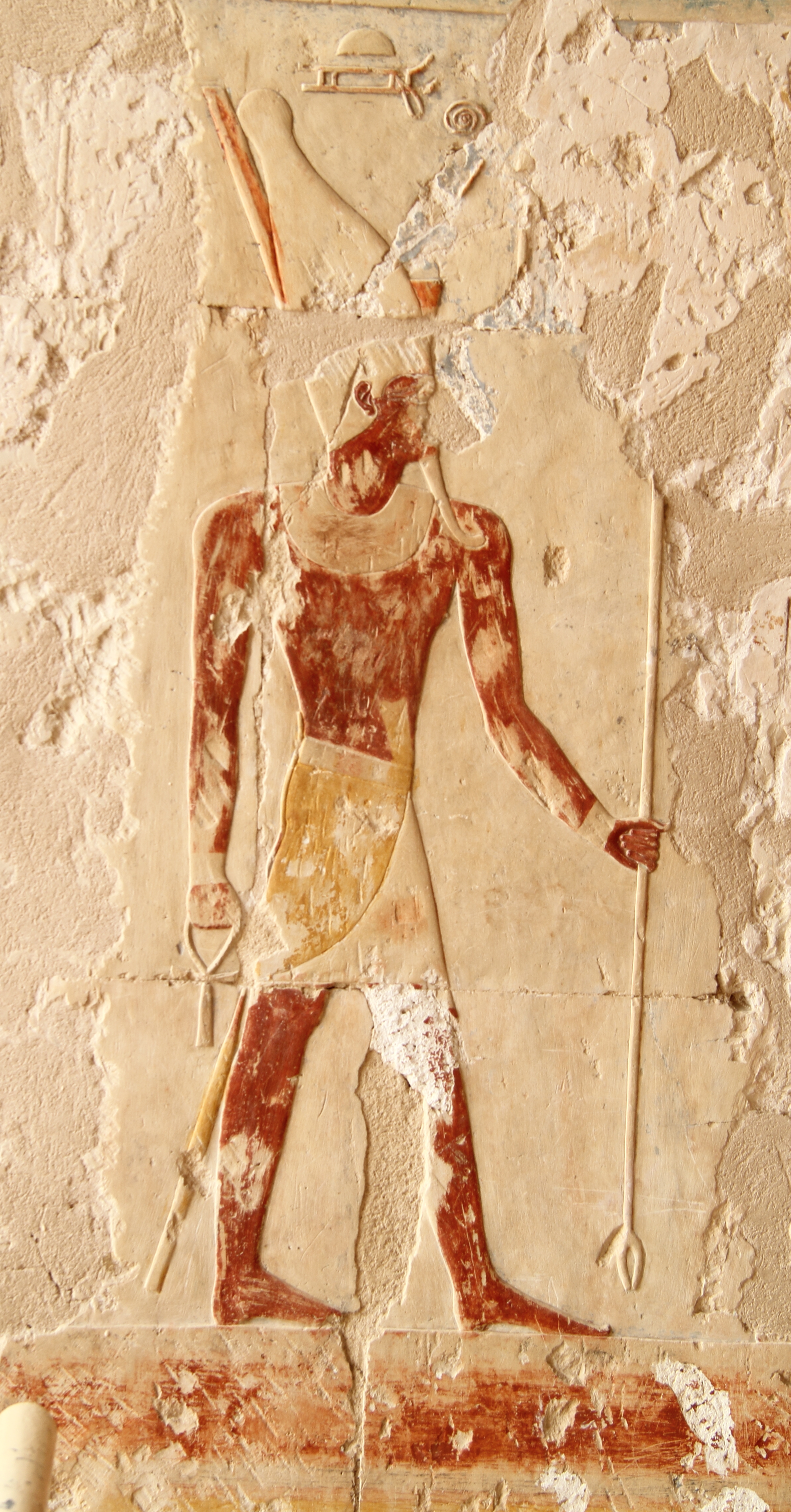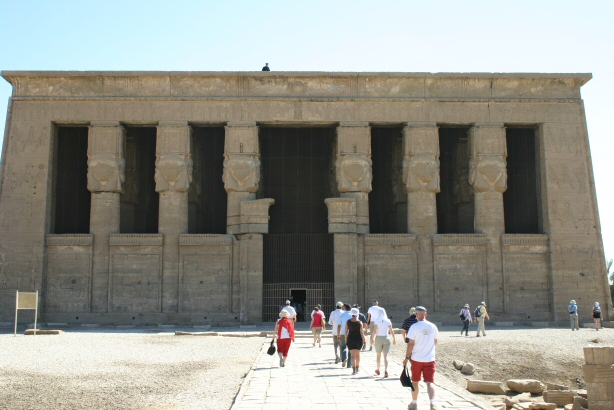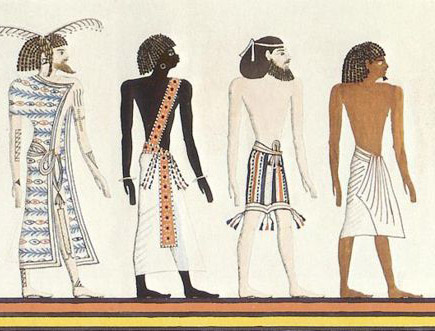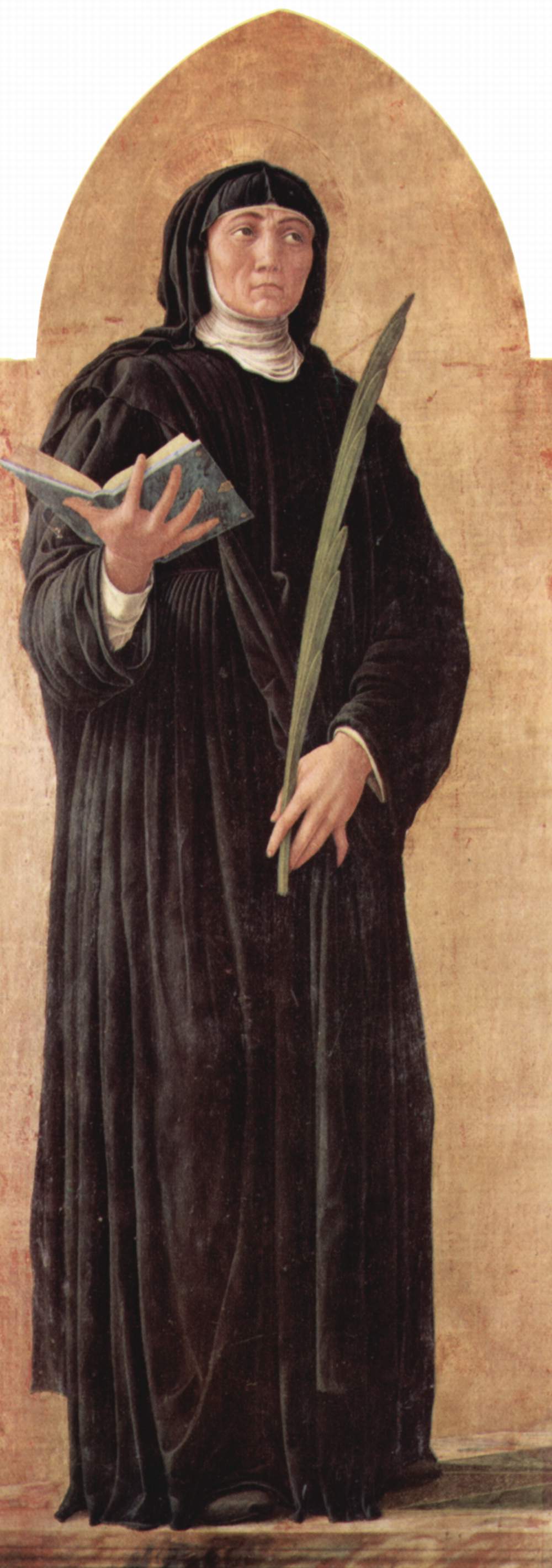|
Naunet
Nu ("Watery One") or Nun ("The Inert One") ( Ancient Egyptian: ; Coptic: ), is the personification of the primordial watery abyss which existed at the time of creation and from which the creator sun god Ra arose, in ancient Egyptian religion. Nu is one of the eight deities of the Ogdoad representing ancient Egyptian primordial Chaos from which the primordial mound arose from. Nun can be seen as the first of all the gods and the creator of reality and personification of the cosmos. Nun is also considered the god that will destroy existence and return everything to the Nun from whence it came. No cult was addressed to Nun. The consort of Nun was the goddess Nunut or Naunet ( Ancient Egyptian: ). Name The name on Nu is paralleled with "inactivity" in a play of words in, "I raised them up from out of the watery mass [], out of inactivity []". The name has also been compared to the Coptic ''noun'' "abyss; deep". Origin myth The ancient Egyptians envisaged the oceanic abyss of ... [...More Info...] [...Related Items...] OR: [Wikipedia] [Google] [Baidu] |
Ogdoad (Egyptian)
In Egyptian mythology, the Ogdoad ( grc, ὀγδοάς "the Eightfold"; egy, ḫmnyw, a plural nisba of "eight") were eight primordial deities worshiped in Hermopolis. References to the Ogdoad date to the Old Kingdom of Egypt, and even at the time of composition of the Pyramid Texts toward the end of the Old Kingdom, they appear to have been antiquated and mostly forgotten by everyone except their theologians. They are frequently mentioned in the Coffin Texts of the Middle Kingdom. The oldest known pictorial representations of the group do not pre-date the time of Seti I ( New Kingdom, thirteenth century BC), when the group appears to be rediscovered by the theologians of Hermopolis for the purposes of creating a more elaborate creation-account. Texts of the Late Period describe them as having the heads of frogs (male) and serpents (female), and they are often depicted in this way in reliefs of the last dynasty, the Ptolemaic Kingdom. Names The eight deities were arrange ... [...More Info...] [...Related Items...] OR: [Wikipedia] [Google] [Baidu] |
Heh (god)
Ḥeḥ (''ḥḥ'', also Huh, Hah, Hauh, Huah, and Hehu) was the personification of infinity or eternity in the Ogdoad in ancient Egyptian religion.Wilkinson, Richard H. (2003). ''The Complete Gods and Goddesses of Ancient Egypt''. Thames & Hudson. p. 109 His name originally meant "flood", referring to the watery chaos that the Egyptians believed existed before the creation of the world. The Egyptians envisioned this chaos as infinite, in contrast with the finite created world, so Heh personified this aspect of the primordial waters. Heh's female counterpart was known as Hauhet, which is simply the feminine form of his name. Like the other concepts in the Ogdoad, his male form was often depicted as a frog, or a frog-headed human, and his female form as a snake or snake-headed human. The frog head symbolised fertility, creation, and regeneration, and was also possessed by the other Ogdoad males Kek, Amun, and Nun. The other common representation depicts him crouching, holding a ... [...More Info...] [...Related Items...] OR: [Wikipedia] [Google] [Baidu] |
Atum
Atum (, Egyptian: ''jtm(w)'' or ''tm(w)'', ''reconstructed'' ; Coptic ''Atoum''), sometimes rendered as Atem or Tem, is an important deity in Egyptian mythology. Name Atum's name is thought to be derived from the verb ''tm'' which means 'to complete' or 'to finish'. Thus, he has been interpreted as being the "complete one" and also the finisher of the world, which he returns to watery chaos at the end of the creative cycle. As creator, he was seen as the progenitor of the world, the deities and universe having received his vital force or ka. Origins Atum is one of the most important and frequently mentioned deities from earliest times, as evidenced by his prominence in the Pyramid Texts, where he is portrayed as both a creator and father to the king. Several writings contradict how Atum was brought into existence. Some state Atum was created by himself by saying his name, while others argue he came out from a blue lotus flower or an egg. Role In the Heliopolitan creation myt ... [...More Info...] [...Related Items...] OR: [Wikipedia] [Google] [Baidu] |
Ennead
The Ennead or Great Ennead was a group of nine deities in Egyptian mythology worshipped at Heliopolis: the sun god Atum; his children Shu and Tefnut; their children Geb and Nut; and their children Osiris, Isis, Set, and Nephthys. The Ennead sometimes includes Horus, the son of Osiris and Isis. Status within ancient Egypt The Great Ennead was only one of several such groupings of nine deities in ancient Egypt. Its claims to preeminence by its Heliopolitan priests were not respected throughout Egypt. As close as Memphis (also within modern Cairo), the priests of Ptah celebrated him as superior to the Nine. In addition to Memphis having its own creation myth, the Ogdoad (of the city of Hermopolis) centered around physical creation and eight primordial gods was another creation story that existed at the same time. Name in Egyptian, Greek, and Latin The English name ''ennead'' is a borrowing via Latin of the Greek name ''enneás'' (), meaning "the nine". The term was a ca ... [...More Info...] [...Related Items...] OR: [Wikipedia] [Google] [Baidu] |
Hauhet
Ḥeḥ (''ḥḥ'', also Huh, Hah, Hauh, Huah, and Hehu) was the personification of infinity or eternity in the Ogdoad in ancient Egyptian religion.Wilkinson, Richard H. (2003). ''The Complete Gods and Goddesses of Ancient Egypt''. Thames & Hudson. p. 109 His name originally meant "flood", referring to the watery chaos that the Egyptians believed existed before the creation of the world. The Egyptians envisioned this chaos as infinite, in contrast with the finite created world, so Heh personified this aspect of the primordial waters. Heh's female counterpart was known as Hauhet, which is simply the feminine form of his name. Like the other concepts in the Ogdoad, his male form was often depicted as a frog, or a frog-headed human, and his female form as a snake or snake-headed human. The frog head symbolised fertility, creation, and regeneration, and was also possessed by the other Ogdoad males Kek, Amun, and Nun. The other common representation depicts him crouching, holding ... [...More Info...] [...Related Items...] OR: [Wikipedia] [Google] [Baidu] |
Huh (god)
Ḥeḥ (''ḥḥ'', also Huh, Hah, Hauh, Huah, and Hehu) was the personification of infinity or eternity in the Ogdoad in ancient Egyptian religion.Wilkinson, Richard H. (2003). ''The Complete Gods and Goddesses of Ancient Egypt''. Thames & Hudson. p. 109 His name originally meant "flood", referring to the watery chaos that the Egyptians believed existed before the creation of the world. The Egyptians envisioned this chaos as infinite, in contrast with the finite created world, so Heh personified this aspect of the primordial waters. Heh's female counterpart was known as Hauhet, which is simply the feminine form of his name. Like the other concepts in the Ogdoad, his male form was often depicted as a frog, or a frog-headed human, and his female form as a snake or snake-headed human. The frog head symbolised fertility, creation, and regeneration, and was also possessed by the other Ogdoad males Kek, Amun, and Nun. The other common representation depicts him crouching, holding a ... [...More Info...] [...Related Items...] OR: [Wikipedia] [Google] [Baidu] |
Dendera
Dendera ( ar, دَنْدَرة ''Dandarah''; grc, Τεντυρις or Τεντυρα; Bohairic cop, ⲛⲓⲧⲉⲛⲧⲱⲣⲓ, translit=Nitentōri; Sahidic cop, ⲛⲓⲧⲛⲧⲱⲣⲉ, translit=Nitntōre), also spelled ''Denderah'', ancient Iunet 𓉺𓈖𓏏𓊖 “jwn.t”, Tentyris or Tentyra is a small town and former bishopric in Egypt situated on the west bank of the Nile, about south of Qena, on the opposite side of the river. It is located approximately north of Luxor and remains a Latin Catholic titular see. It contains the Dendera Temple complex, one of the best-preserved temple sites from ancient Upper Egypt. Etymology The original name of the town is , the etymology of which is unknown. It was later complemented by the name of the chief goddess Hathor and became Egyptian which is the source of cop, ⲛⲓⲧⲉⲛⲧⲱⲣⲓ, translit=Nitentōri or just "of the goddess", which is the source of grc-x-koine, Τεντυρις. The modern Arabic name of t ... [...More Info...] [...Related Items...] OR: [Wikipedia] [Google] [Baidu] |
Karnak
The Karnak Temple Complex, commonly known as Karnak (, which was originally derived from ar, خورنق ''Khurnaq'' "fortified village"), comprises a vast mix of decayed temples, pylons, chapels, and other buildings near Luxor, Egypt. Construction at the complex began during the reign of Senusret I (reigned 1971–1926 BCE) in the Middle Kingdom (around 2000–1700 BCE) and continued into the Ptolemaic Kingdom (305–30 BCE), although most of the extant buildings date from the New Kingdom. The area around Karnak was the ancient Egyptian ''Ipet-isut'' ("The Most Selected of Places") and the main place of worship of the 18th Dynastic Theban Triad, with the god Amun as its head. It is part of the monumental city of Thebes, and in 1979 it was inscribed on the UNESCO World Heritage List along with the rest of the city. The Karnak complex gives its name to the nearby, and partly surrounded, modern village of El-Karnak, north of Luxor. Overview The complex is a vast open site an ... [...More Info...] [...Related Items...] OR: [Wikipedia] [Google] [Baidu] |
Book Of Gates
The Book of Gates is an ancient Egyptian funerary text dating from the New Kingdom. It narrates the passage of a newly deceased soul into the next world, corresponding to the journey of the sun through the underworld during the hours of the night. The soul is required to pass through a series of 'gates' at different stages in the journey. Each gate is associated with a different goddess, and requires that the deceased recognise the particular character of that deity. The text implies that some people will pass through unharmed, but that others will suffer torment in a lake of fire. Categories The most famous part of the ''Book of Gates'' today refers to the different races of humanity known to the Egyptians, dividing them up into four categories that are now conventionally labelled "Reth" (Egyptians), "Aamu" ( Asiatics), "Nehesu" (Nubians), and "Themehu" ( Libyans). These are depicted in procession entering the next world. The text and images associated with the Book of Gate ... [...More Info...] [...Related Items...] OR: [Wikipedia] [Google] [Baidu] |
Nun Raises The Sun
A nun is a woman who vows to dedicate her life to religious service, typically living under vows of poverty, chastity, and obedience in the enclosure of a monastery or convent.''The Oxford English Dictionary'', vol. X, page 599. The term is often used interchangeably with religious sisters who do take simple vows but live an active vocation of prayer and charitable work. In Christianity, nuns are found in the Roman Catholic, Oriental Orthodox, Eastern Orthodox, Lutheran, and Anglican traditions, as well as other Christian denominations. In the Buddhist tradition, female monastics are known as Bhikkhuni, and take several additional vows compared to male monastics (bhikkhus). Nuns are most common in Mahayana Buddhism, but have more recently become more prevalent in other traditions. Christianity Catholicism In the Catholic tradition, there are many religious institutes of nuns and sisters (the female equivalent of male monks or friars), each with its own charism or s ... [...More Info...] [...Related Items...] OR: [Wikipedia] [Google] [Baidu] |
Solar Deity
A solar deity or sun deity is a deity who represents the Sun, or an aspect of it. Such deities are usually associated with power and strength. Solar deities and Sun worship can be found throughout most of recorded history in various forms. The Sun is sometimes referred to by its Latin name ''Sol'' or by its Greek name '' Helios''. The English word ''sun'' derives from Proto-Germanic *''sunnǭ''. Overview Predynasty Egyptian beliefs attribute Atum as the Sun god and Horus as god of the sky and Sun. As the Old Kingdom theocracy gained influence, early beliefs were incorporated into the expanding popularity of Ra and the Osiris-Horus mythology. Atum became Ra-Atum, the rays of the setting Sun. Osiris became the divine heir to Atum's power on Earth and passed his divine authority to his son, Horus. Other early Egyptian myths imply that the Sun is incorporated with the lioness Sekhmet at night and is reflected in her eyes; or that the Sun is found within the cow Hathor during t ... [...More Info...] [...Related Items...] OR: [Wikipedia] [Google] [Baidu] |
Boat
A boat is a watercraft of a large range of types and sizes, but generally smaller than a ship, which is distinguished by its larger size, shape, cargo or passenger capacity, or its ability to carry boats. Small boats are typically found on inland waterways such as rivers and lakes, or in protected coastal areas. However, some boats, such as the whaleboat, were intended for use in an offshore environment. In modern naval terms, a boat is a vessel small enough to be carried aboard a ship. Boats vary in proportion and construction methods with their intended purpose, available materials, or local traditions. Canoes have been used since prehistoric times and remain in use throughout the world for transportation, fishing, and sport. Fishing boats vary widely in style partly to match local conditions. Pleasure craft used in recreational boating include ski boats, pontoon boats, and sailboats. House boats may be used for vacationing or long-term residence. Lighters are used to convey ... [...More Info...] [...Related Items...] OR: [Wikipedia] [Google] [Baidu] |







